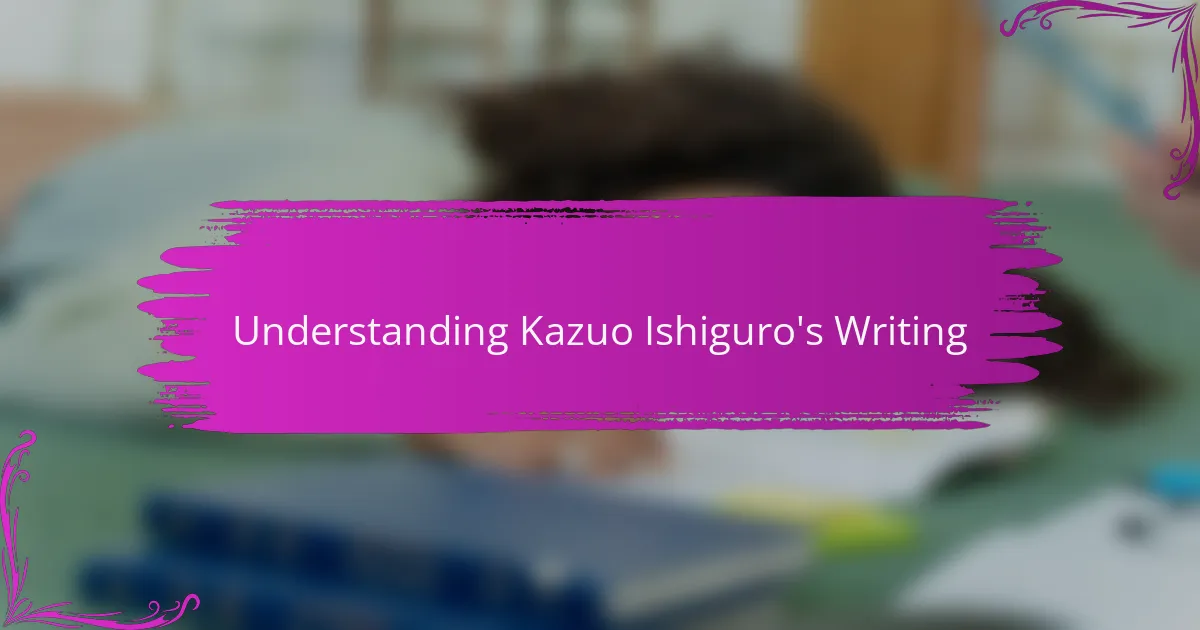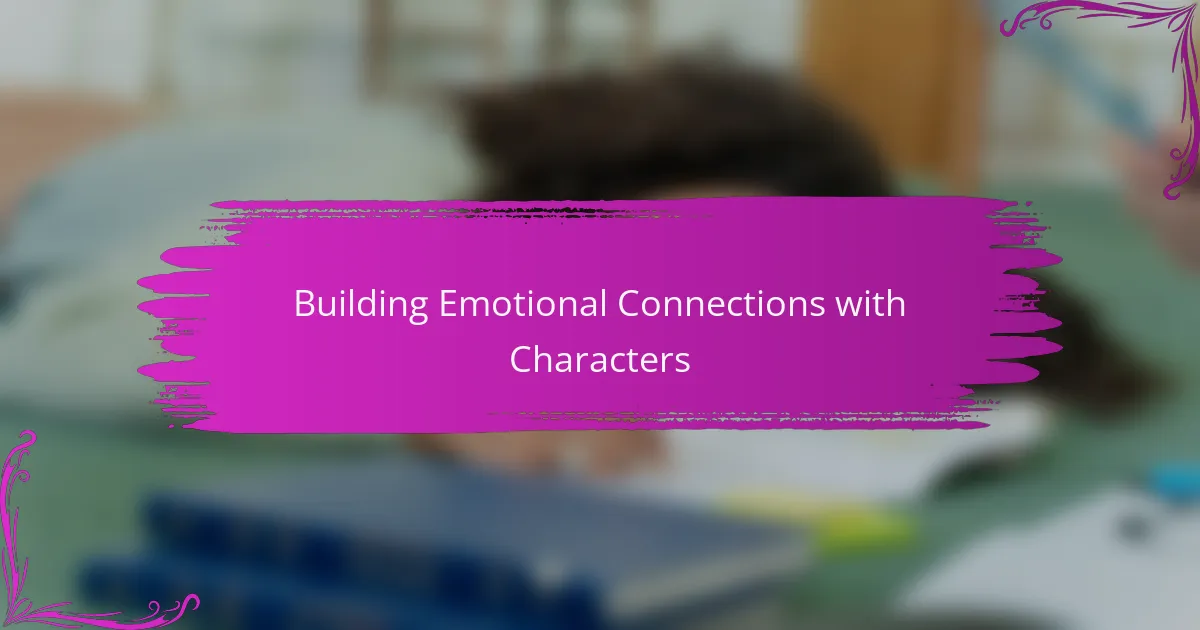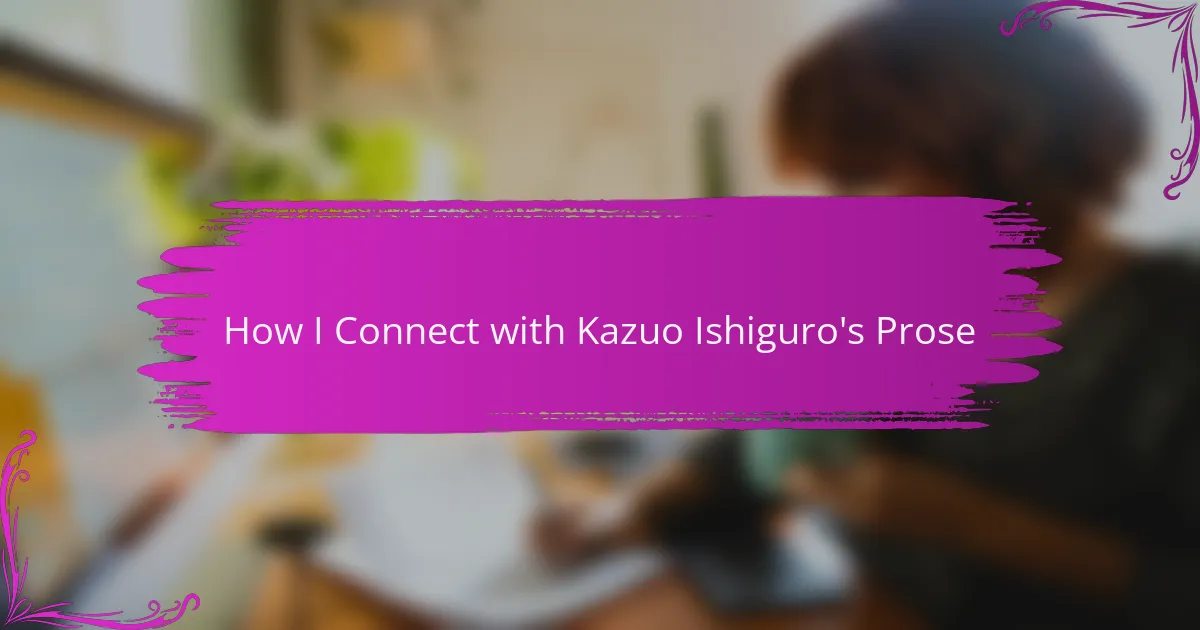Key takeaways
- Kazuo Ishiguro’s writing uniquely combines simplicity and depth, exploring themes of memory, identity, and emotional nuance.
- Literary analysis enhances critical thinking, deepens comprehension, and fosters personal connections with texts, enriching the reading experience.
- Effective techniques for engaging with prose include annotating, reading aloud, and discussing with others, which can reveal new insights.
- Ishiguro’s characters embody relatable emotional arcs, inviting readers to reflect on their own experiences and connections with memory and identity.

Understanding Kazuo Ishiguro’s Writing
Kazuo Ishiguro’s prose often delivers a unique blend of simplicity and depth that resonates on multiple levels. I remember the first time I read “Never Let Me Go.” The stark emotions and haunting themes left me pondering long after I turned the last page. This ability to evoke such powerful feelings from seemingly straightforward language is one of the hallmarks of his style.
Another striking aspect of his writing is the exploration of memory and identity. I often find myself asking, what does it mean to truly know oneself? Ishiguro delves into these questions with great sensitivity. His characters grapple with their pasts, making readers reflect on their own experiences and connections. This intricacy within his narratives lingers, prompting self-examination in a way that feels both personal and universal.
Moreover, there’s a subtlety in Ishiguro’s storytelling that draws me in. His use of unreliable narrators compels me to question what is real and what is constructed. I’ve often felt a mix of confusion and clarity as I sift through the layers of his characters’ perspectives. It’s that very oscillation between certainty and doubt that keeps me coming back to his works, eager to unravel the complex tapestries he weaves.

Importance of Literary Analysis
Literary analysis goes beyond simply reading a text; it transforms the act into an exploration of deeper meanings and themes. I recall my first encounter with Kazuo Ishiguro’s work. I was captivated not just by his storytelling but by the intricate layers of emotion woven through his prose. Engaging with his narratives has taught me that every character and setting contributes significantly to the overarching message.
When we delve into literary analysis, we sharpen our critical thinking skills, enabling us to appreciate the complexity of literature more fully. As I dissected Ishiguro’s emotional landscape in “Never Let Me Go,” I found myself grappling with questions about memory, loss, and humanity. This practice has enriched my reading experience and allowed me to connect with texts on a profoundly personal level.
- Enhances critical thinking and analytical skills.
- Deepens comprehension of themes, character development, and narrative structure.
- Fosters a personal connection between reader and text, enhancing emotional responses.
- Encourages discussion and differing interpretations, enriching the literary community.

Techniques for Engaging with Prose
When approaching prose, I find that annotating the text can significantly deepen my understanding. As I read Ishiguro, I often jot down thoughts or emotions that each passage evokes. This simple act not only helps capture fleeting insights but also creates a dialogue between me and the author that makes each re-reading richer and more rewarding.
Another technique I embrace is reading aloud. I vividly recall how the rhythm of Ishiguro’s sentences can alter my perception of the themes presented. Hearing the words gives them life, allowing me to feel the weight of the characters’ experiences. Have you ever noticed how tone and inflection can bring new meaning to otherwise familiar phrases? It’s a practice I recommend for anyone looking to truly engage with a text and explore its emotional resonance.
Lastly, discussing the book with others has been invaluable in my journey through Ishiguro’s narratives. I remember a book club meeting where we dissected “The Remains of the Day.” Sharing different interpretations illuminated aspects I had overlooked, reinforcing the idea that literature is a collective experience. Engaging in conversations about a text can spark new insights and transform our individual readings into a shared exploration.

Building Emotional Connections with Characters
Building Emotional Connections with Characters
Kazuo Ishiguro has a unique way of crafting characters that feel both fully realized and profoundly relatable. When I delve into his works, I often find myself reflecting on my own experiences and emotions. For instance, in “Never Let Me Go,” the characters’ struggles with identity and impermanence resonate deeply with me, reminding me of my own journey through life’s uncertainties.
What I appreciate most is how Ishiguro weaves subtlety into his narratives. He invites readers to engage emotionally without overtly expressing every feeling. I remember reading “The Remains of the Day” and feeling an ache in my heart as I connected with Stevens’ bittersweet recollections. Such connections make his characters stay with me long after I finish reading.
Here’s a comparison of some characters and their emotional arcs in Ishiguro’s works:
| Character | Emotional Journey |
|---|---|
| Stevens (The Remains of the Day) | Struggles with regret and lost opportunities, ultimately seeking closure. |
| Kathy (Never Let Me Go) | Faces existential dilemmas and the longing for empathy in a fraught reality. |
| Graham (When We Were Orphans) | Embarks on a quest for truth while grappling with nostalgia and disillusionment. |

Personal Reflection on Literary Themes
Connecting with Kazuo Ishiguro’s prose allows me to explore deeply resonant themes like memory, loss, and the search for identity. I often find myself reflecting on how our past shapes who we are today, a theme that Ishiguro masterfully weaves throughout his narratives. For instance, while reading “Never Let Me Go,” I felt an acute sense of nostalgia, as it mirrors my own experiences of grappling with fleeting moments in life and the bittersweet nature of cherished memories.
When I engage with his stories, I’m often reminded of conversations with my grandparents, where fragments of their lives converge with my own. This rich tapestry of shared experience deepens my appreciation for his exploration of how we navigate love and individuality amid societal constraints. Ishiguro’s ability to evoke such emotions really resonates with me, as it often feels like he’s capturing the essence of our shared human experience.
| Theme | Example from Ishiguro’s Work |
|---|---|
| Memory | Characters frequently reflect on their past, revealing how it influences their present decisions. |
| Loss | The struggles of letting go are evident in narratives like “The Remains of the Day.” |
| Identity | Characters often grapple with their sense of self, leading to profound revelations. |

Resources for Studying Ishiguro’s Works
Exploring Kazuo Ishiguro’s prose can be even more enriching with the right resources. When I first delved into his works, I found that books offering literary criticism and analyses opened up new layers of meaning for me. They provided insights into the subtleties of his themes, which I might have otherwise overlooked.
To deepen your understanding of Ishiguro’s literature, I recommend the following resources:
- “Kazuo Ishiguro: A Study of the Novels” by James L. W. West III for a comprehensive analysis.
- The official Kazuo Ishiguro website, which includes interviews and essays about his writing process.
- Various literary journals like “The New Yorker” that often feature discussions on his books.
- Podcasts dedicated to literature, specifically episodes focused on Ishiguro’s major themes and narrative style.
- Online courses or webinars like those offered by Coursera or edX that explore his works through guided discussions.
Using these resources, you can find connections between Ishiguro’s world and your own experiences, enhancing your engagement with his profound narratives.




